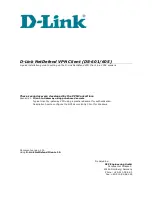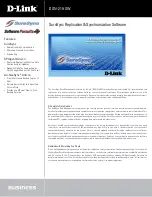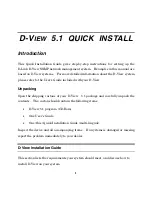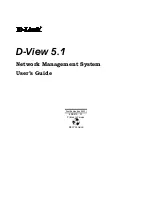
results of the new policy, you must use the
clear ip bgp peer-group
command
to perform a hard clear or outbound soft clear of the peer group. You cannot
merely perform a hard clear or outbound soft clear for individual peer group
members because that causes BGP to resend only the contents of the Adj-RIBs-Out
table.
■
Use the
no
version to remove the prefix list.
■
See neighbor prefix-list.
Configuring Route Flap Dampening
Route flap dampening is a mechanism for minimizing instability caused by route
flapping.
Route flapping
occurs when a link is having a problem and is constantly
going up and down. Every time the link goes down, the upstream peer withdraws
the routes from all its neighbors. When the link comes back up again, the peer
advertises those routes globally. When the link problem appears again, the peer
withdraws the routes again. This process continues until the underlying problem is
fixed.
The router stores a penalty value with each route. Each time the route flaps, the
router increases the penalty by 1000. If the penalty for a route reaches a configured
suppress
value, the router suppresses the route. That is, the router does not include
the route as a forwarding entry and does not advertise the route to BGP peers.
The penalty decrements by 50 percent for each
half-life
interval that passes. The
half-life interval resets when the route flaps and the penalty increments. The route
remains suppressed until the penalty falls below the configured
reuse
threshold, at
which point the router once again advertises the route. You can specify a
max-suppress-time
for route suppression; after this interval passes, the router once
again advertises the route.
BGP creates a
dampening parameter block
for each unique set of dampening
parameters—such as suppress threshold and reuse threshold—used by BGP. For
example, if you have a route map that sets the dampening parameters to one set of
values for some routes and to another set of values for the remaining routes, BGP
uses and stores two dampening parameter blocks, one for each set.
Global Route Flap Dampening
Use the
bgp dampening
command if you want to enable route flap dampening with
the same values on all BGP routes, or on all routes matching the specified route map.
If you specify a route map, the router dampens only routes that are permitted by
the route map. For example:
host1(config-router)#
bgp dampening 8 600 2500 30 route-map 1
bgp dampening
102
■
Configuring BGP Routing Policy
JUNOSe 11.0.x BGP and MPLS Configuration Guide
Summary of Contents for JUNOSE
Page 6: ...vi...
Page 8: ...viii JUNOSe 11 0 x BGP and MPLS Configuration Guide...
Page 24: ...xxiv Table of Contents JUNOSe 11 0 x BGP and MPLS Configuration Guide...
Page 37: ...Part 1 Border Gateway Protocol Configuring BGP Routing on page 3 Border Gateway Protocol 1...
Page 38: ...2 Border Gateway Protocol JUNOSe 11 0 x BGP and MPLS Configuration Guide...
Page 234: ...198 Monitoring BGP JUNOSe 11 0 x BGP and MPLS Configuration Guide...
Page 236: ...200 Multiprotocol Layer Switching JUNOSe 11 0 x BGP and MPLS Configuration Guide...
Page 298: ...262 Point to Multipoint LSPs Configuration JUNOSe 11 0 x BGP and MPLS Configuration Guide...
Page 536: ...500 Monitoring BGP MPLS VPNs JUNOSe 11 0 x BGP and MPLS Configuration Guide...
Page 538: ...502 Layer 2 Services Over MPLS JUNOSe 11 0 x BGP and MPLS Configuration Guide...
Page 604: ...568 Virtual Private LAN Service JUNOSe 11 0 x BGP and MPLS Configuration Guide...
Page 618: ...582 VPLS References JUNOSe 11 0 x BGP and MPLS Configuration Guide...
Page 674: ...638 Virtual Private Wire Service JUNOSe 11 0 x BGP and MPLS Configuration Guide...
Page 718: ...682 Monitoring MPLS Forwarding Table for VPWS JUNOSe 11 0 x BGP and MPLS Configuration Guide...
Page 719: ...Part 6 Index Index on page 685 Index 683...
Page 720: ...684 Index JUNOSe 11 0 x BGP and MPLS Configuration Guide...
















































